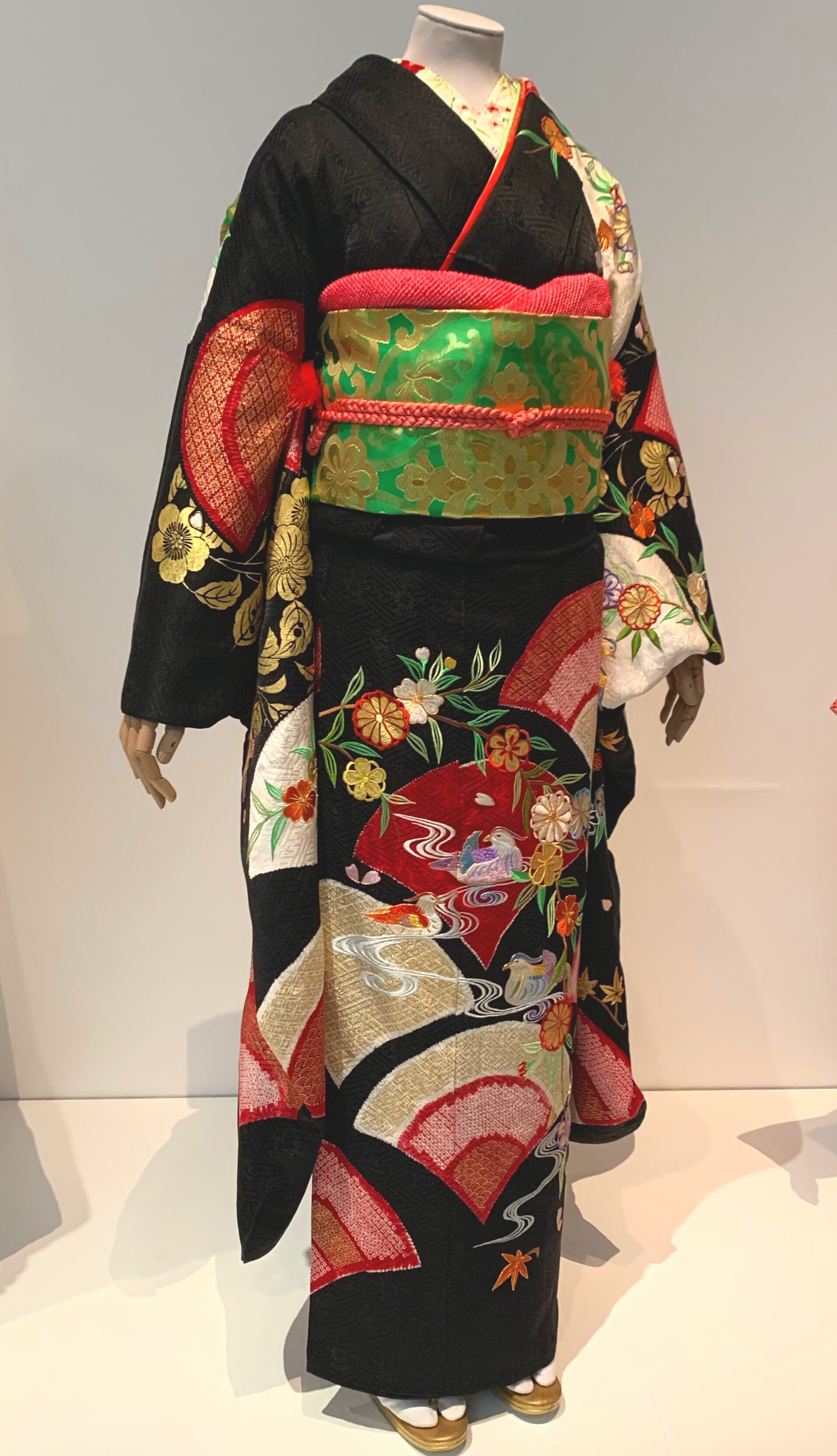Kimono: Kyoto to Catwalk - the enduring fascination and influence of the kimono
Kimono : Koyoto to Catwalk, the new exhibition at the Victoria and Albert Museum
Kyoto to Catwalk at the Victoria and Albert Museum is Europe’s first exhibition about the iconic Japanese garment - the kimono. And with over 300 items, some dating back to the 17th century, it was certainly worth the wait.
The basic shape of this deeply traditional form of dress hasn’t altered for centuries, but don’t let that fool you into believing that that means it hasn’t changed. As I discovered when I spent a fascinating couple of hours exploring the history and development of a quintessentially Eastern garment which continues to influence catwalks around the world today.
These are some of the facts and stories from an exhibition that reveals as much about Japanese society and life as it does about a garment whose history stretches back over a thousand years.
Kimo-know fact 1
The word kimono literally means ‘the thing to wear’. It’s a straight-seamed garment secured with a waist sash known as an obi.
An ornately decorated traditional style kimono
They’re made using minimal cutting from a single bolt of cloth. Separate lengths of fabric are hung over the shoulders and down to the hem at the front and back, and used for the sleeves, with narrower sections for the collar, over-collar and overlaps of the front opening. The sections are temporarily sewn together for the design to be drawn on, then separated for decorating before being finally sewn together permanently.
Kimo-know fact 2
Kimonos are thought of as being women’s garments, but they were - and are - also worn by men and boys.
Kimo-know fact 3
The design of the cloth of the kimono is more important than the shape, which is why it hasn’t ever fundamentally changed.
The basic shape of the kimono hasn’t changed in centuries.
The status, wealth, taste and even gender of the wearer was communicated through the fabric, colour, pattern and design technique.
In the 17th and 18th centuries, Kimonos could be bought from specialist shops, but the sumptuous kimono of the monied elite, were specially commissioned and often beautiful works of art.
Kimo-know fact 4
The colours of kimono have strong metaphorical and cultural meaning. Dyes were believed to embody the spirit of the plants they were extracted from so that any medicinal property was thought to be transferred to the cloth.
The blue colour of this kimono was thought to protect the wearer
Blue, for example, comes from indigo which is used to treat bites and stings. So a blue fabric was thought act as a repellent to snakes and insects.
Kimo-know fact 5
High ranking courtesans were celebrities and fashion icons, admired for their style and taste, culture and artistic ability as much as their sexual skills.
This intricately designed kimono was worn by a high-ranking courtesan, probably to parade through the pleasure quarter
They would wear spectacular kimono and very high shoes, known as geta, when parading through the pleasure quarter, which would serve as great publicity for both their brothel owners and the clothing merchants.
Just look at the height of her geta (shoes)!
Kimo-know fact 6
When Japan opened up its ports to foreign trade in the 19th century and started making garments specifically for export, wearing kimono became a worldwide craze.
Gradually British and European designers started to create kimono-influenced designs.
This kimono-inspired dress was made in Paris in around 1922
At the same time, kimono-wearing declined in Japan as more and more people adopted Western dress.
Kimo-know fact 7
By the post-war period most Japanese people were only wearing kimono for special occasions, such as weddings or special ceremonies.
A bride would wear a white, hooded (for modesty) kimono for her wedding ceremony, then change into a red one afterwards
White bridal kimono are called shiromuku (meaning ‘pure white’) a colour that symbolises the bride’s willingness to adapt to the ways of her groom’s family. Traditionally the bride changes in to a red kimono after the ceremony.
Kimo-know fact 8
Although kimono-wearing declined after the war, it retained its powerful symbolic status of national and cultural identity.
To ensure the continuation of the historic skills of cloth dyeing and weaving that are integral to kimono-making, the Japanese government introduced a system in which the most skilled practitioners were called ‘Intangible Cultural Property’ and were popularly known as ‘Living National Treasures’
Kimo-know fact 9
With kimono-wearing seen as ceremonial and associated with the past, the kimono looked in danger of dying out, but in recent years there’s been a resurgence of interest from young Japanese who have tired of frequent changes in western fashion and want to reclaim their traditional form of dress.
A new wave of young Japanese designers are re-interpreting the kimono
Many are restyling vintage kimono and a new wave of designers are emerging who are reimagining the kimono in fresh and sometimes surprising ways.
Kimo-know fact 10
Kimono have long been popular amongst musicians and film costume designers.
The costume for Star Wars character Obi-Wan Kenobi was a mash-up of Buddhist monk and noble samaurai.
The kimono-inspired costume worn by Obi-Wan Kenobi in the Star Wars films
Singer Bjork collaborated with designer Alexander McQueen on the kimono outfit for the iconic cover of her 1997 album Homogenic
Alexander McQueen created this kimono for Bjork for the cover shot of her album, Homogenic
There’s so much more to discover and see in the Kimono : Koyoto to Catwalk exhibition and the good news is you’ve got until June 21st to plan your visit. Find all the details of opening times and ticket prices here.
Japan has long been at the top of my bucket-list destinations and I was due to be going as an eagerly anticipated birthday trip in a couple of months time (at the time of writing this). Sadly the coronavirus has put paid to our long-laid plans (we booked the trip over a year ago).
So although we’re very much hoping to make this a postponement, not a cancellation, this glorious exhibition is probably the closest I’ll get to Japan for the foreseeable future.
As consolations go, it’s not a bad one.
Other posts you’ll enjoy
Lots to learn - about language, life and our environment - from these great podcasts
Not quite Japan, but this fabulous destination is another island archipelago not far away















